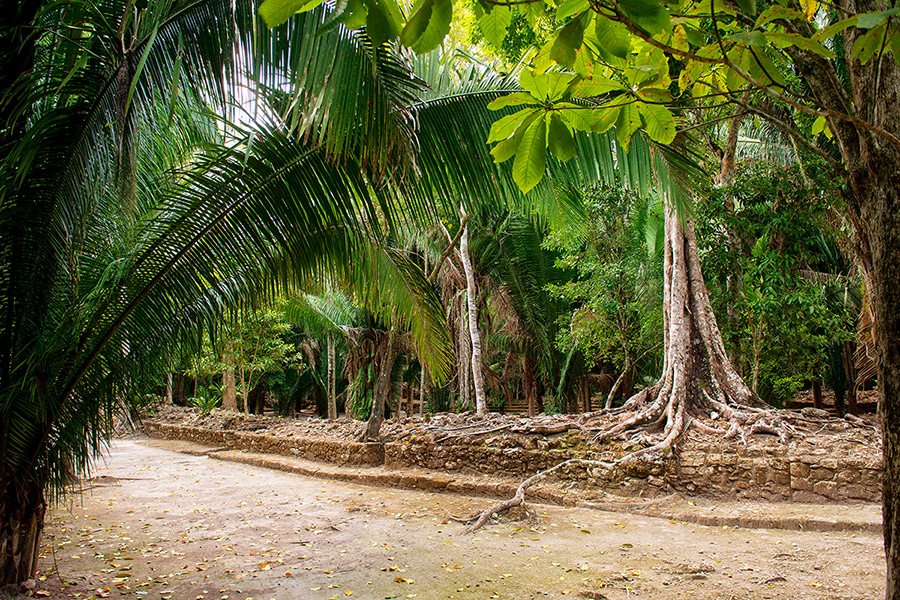Chacchoben's History
Archaeological evidence indicates that Chacchoben continued to hold ceremonial significance long after the apparent collapse of the Maya civilization. Numerous rituals were performed within its abandoned temples. However, this vibrant cultural tapestry was dramatically altered upon the arrival of the Spanish in the 15th century. The subsequent conquest of Mexico and Central America ushered in a new era for the Maya people, marked by profound changes in their population, religion, and way of life.
By 1847, the Yucatan Peninsula was in turmoil. The Maya population, grappling with the profound changes brought about by Spanish colonization, erupted in rebellion. The Caste War, led by the Maya Cruzob, marked a final, desperate struggle against Mexican control of the peninsula.
The 50-year Caste War was a period of immense suffering for the Maya people. Entire towns were razed, forcing families to flee their homes and seek refuge in British Honduras (now Belize) and Guatemala. Amidst this turmoil, the sacred rituals and pilgrimages to Chacchoben ceased. As the conflict raged, the site was abandoned to the encroaching jungle, disappearing into obscurity.

The Enduring Spirit of Chacchoben
Archaeological evidence places the earliest human presence in the Chacchoben region around 1000 BC. Excavations reveal a complex history of occupation, abandonment, and resettlement. The site's structures bear the marks of multiple modifications, with the most significant alterations occurring between 300 and 360 AD, a period of notable development and change.
The Rediscovery of Chacchoben
The modern history of Chacchoben begins in 1942. A local Maya farmer named Serviliano Cohuo, while searching for fertile land, stumbled upon the forgotten city. Intrigued by the ancient ruins, he established his home at the base of the Gran Basamento, marking the beginning of a unique coexistence between man and monument. Over time, his children grew up playing amidst the majestic remnants of their ancestors' civilization.
In 1972, the Cohuo family welcomed Dr. Peter Harrison, an American archaeologist, to Chacchoben. Leading a joint project for Tulane University and the Royal Ontario Museum, Harrison became the first professional archaeologist to explore the site. His groundbreaking work included creating the first detailed maps of Chacchoben and subsequently informing the Mexican government of its significance.
The newly formed state of Quintana Roo enacted land ownership regulations in 1974. In recognition of his stewardship, Serviliano Cohuo was granted official ownership of his land and was designated Honorary Gardian of the Chacchoben ruins, in 1978. Tragically, he passed away in 1991 without witnessing the restoration of the temples he had grown to cherish as part of his family.
A new chapter in Chacchoben's history began in June 1994 with the initiation of a restoration project under the auspices of Mexico's National Institute of Anthropology and History (INAH). Over the ensuing years, archaeologist Juan Rique meticulously excavated and restored the site's Group I-A and I-B complexes. After nearly a millennium of slumber, Chacchoben's ancient secrets were finally beginning to emerge.
In October 2002, a pivotal agreement between INAH and the Chacchoben community marked a turning point for the site. The land, including the meticulously restored archaeological complexes, was officially designated a Historical Site. This transition from private to public ownership ensured the long-term preservation of Chacchoben and opened its doors to visitors from around the world. While the Cohuo family relinquished ownership, their legacy as the site's original caretakers lives on.
While much of the surrounding land was cultivated, Serviliano Cohuo wisely preserved the natural vegetation covering Chacchoben's ancient structures. Today, the site stands as a verdant oasis, cloaked in a canopy of Spanish moss, swaying palms, and exotic orchids. This harmonious blend of nature and history creates a unique and enchanting atmosphere, inviting exploration and a deeper connection to the past.

Chacchoben's Natural Setting
Chacchoben's sprawling ceremonial center encompasses nearly six square kilometers. Nestled within the so-called "Region of the Lakes," the site is characterized by its low-lying terrain and abundant lagoons. This unique hydrological environment has shaped the region's ecology and likely influenced the Maya who called it home.
The Enigma of Chacchoben's Name
Chacchoben, meaning "Place of Red Maize," derives its name from the nearby village that shares the same moniker. While this translation is widely accepted, the site's original name remains a mystery, as no inscriptions referencing it have been discovered. Consequently, the modern designation of Chacchoben persists.